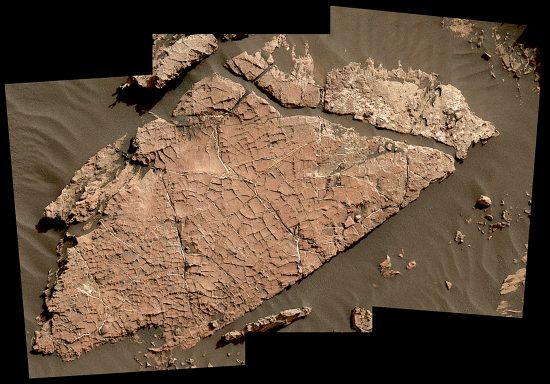
January 22, 2020
NASA officials recently announced that there is water on Mars. Again.
That idea builds upon ideas that are embedded in the philosophy of Martian exploration: the search for life on other planets. As most theories state, for life to exist, liquid water must exist.
Oceans, lakes and rivers are all supposed to once have existed on Mars. The Spirit and Opportunity rovers identified regions that look like water-carved channels. Gusev crater, in particular, was suggestive of a large lake with a runoff channel. However, analysis of data from Spirit was inconclusive and no specific signs of water were present.
The Mars Science Laboratory, otherwise known as “Curiosity”, is currently exploring Gale Crater, located just southwest of Elysium Mons on the edge of the vast northern plains. Gale crater is over 150 kilometers in diameter, making it one of the largest on Mars. It was selected for Curiosity’s landing site because of a central formation known as “Mt. Sharp” (Aeolis Mons), which appears to be a sedimentary, layered deposit over 5500 meters high that was subsequently eroded by wind.
Curiosity is exploring Mt. Sharp along a path that follows a channel meandering up the mountain. Several deep gouges in the mountainside are presumed to be gullies formed by liquid water runoff at some time in the distant past. As mentioned, Mt. Sharp is thought to be a collection of wind-deposited sediments that were soaked by groundwater, so mission specialists are hoping that it will provide the traces of biology that the Viking landers did not.
High resolution images of Mt. Sharp’s summit appear to indicate hydrological features, as well. The HiRise satellite, currently orbiting Mars, is equipped with a half-meter telescope, able to resolve objects as small as 30 centimeters from 300 kilometers in orbit. A recent data analysis shows “box work” structures on top of Mt. Sharp that seem indicative of “potholes”. On Earth, potholes form on top of large boulders or on the peaks of hills and mountains. They often occur where rainwater settles in cracks and low spots. Over eons of time, those small disconformities in the rock are said to grow, sometimes into bowl-shaped lakes.
Water is not the only force that can split rocks, carve basins, erode channels and sculpt mountains.
Many Pictures of the Day argue that if the environment on Mars was ever conducive to flowing water, those conditions no longer exist because of planet-wide electrical discharges. Any water or organic material was obliterated by catastrophic lightning bolts. Whatever the source (perhaps charged, planet-sized objects), underground currents of electricity blasted out gigantic chasms in the Martian surface. X-rays and gamma-rays, along with thermal energy and explosive shockwaves, would be enough to disintegrate any organism.
As these pages point out, each of the planets took part in several catastrophic events in the not-so-distant past. Mars is often described by planetary scientists as “mysterious” or “puzzling”. The reason for their confusion is one of reverse application. Earth should not be used as a de facto model for other places in the Solar System.
Stephen Smith
The Thunderbolts Picture of the Day is generously supported by the Mainwaring Archive Foundation.












